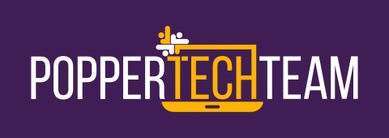Common Risk Assessment Myths That Every Business Owner Needs to Know

Despite believing they were immune, a small law firm in Maryland fell victim to a ransom ware attack. Similarly, an accounting firm in the Midwest lost all access to its client information, financial records and tax files. They assumed that antivirus software was all the security they needed to thwart a cyberattack.
In both incidents, the victims coincidently were small businesses and fell prey to sophisticated cyberattacks because of their flawed risk assessment practices.
When it comes to IT risk assessments, business owners have several misconceptions that leave them vulnerable. In this blog, we’ll uncover common cyber risk assessment myths and discuss the reality. By the end, we’ll also show you how you can build an effective risk assessment strategy.
Misconceptions can hurt your business
Here are some common myths that all business owners must avoid:
Myth 1: We’re too small to be a target.
Reality: Hackers often use automated tools to look for vulnerabilities in a system and small businesses invariably end up on the receiving end as many of them lack the resources to build a strong cybersecurity posture.
Myth2: Risk assessments are too expensive.
Reality: When you factor in the actual business loss due to a cyberattack, investing in proactive cybersecurity makes for a smart business decision. Proactive security practices not only protect your money but also save you from costly lawsuits and reputational damage.
Myth 3: We have antivirus software, so we’re protected.
Reality: You can’t rely only on antivirus software to protect your IT infrastructure. Cybercriminals today have become highly skilled and can effortlessly deploy advanced threats. To secure your business, you must have a comprehensive risk assessment strategy. A multi-layered security approach will not only protect your business but also lay the foundation for your long-term business growth.
Myth 4: Risk assessments area one-time event
Reality: Today’s businesses operate in a threat landscape that is constantly evolving. Without regular risk assessments, you won’t be able to build a strong cybersecurity posture. In the absence of regular risk scans, new vulnerabilities can creep in and leave your business vulnerable to cyber threats.
Myth 5: We can handle risk assessment ourselves
Reality: Businesses often rely on internal resources to maintain cybersecurity. However, joining forces with an IT service provider can be a game changer for your business. An experienced service provider has the expertise, resources and advanced tools to carry out effective assessments. They also have the latest knowledge of emerging threats and vulnerabilities, so they can protect your business better than anybody else.
Why you need an IT service provider
- Access accurate and up-to-date information on risk assessments without getting side tracked by misconceptions.
- Conduct thorough assessments to identify weaknesses in your IT systems and resolve them before they can pose any threat.
- Implement a robust security strategy that can help protect your business from a wide range of threats.
- Ensure your business has a fighting chance against evolving threats so you can focus on building your business instead of worrying about cybersecurity.
Take control of your risks
Are you finding it a challenge to manage your IT risks all on your own?
Cyberthreats are always lurking and with one mistake, you could be the next victim. Cyber incidents can slam the breaks on your growth. That’s why you need an experienced team of IT experts to help you build a resilient cyber security posture. Consider teaming up with an IT service provider like us. We have a team of experts and advanced tools to help you navigate the complexities of cybersecurity with ease.









